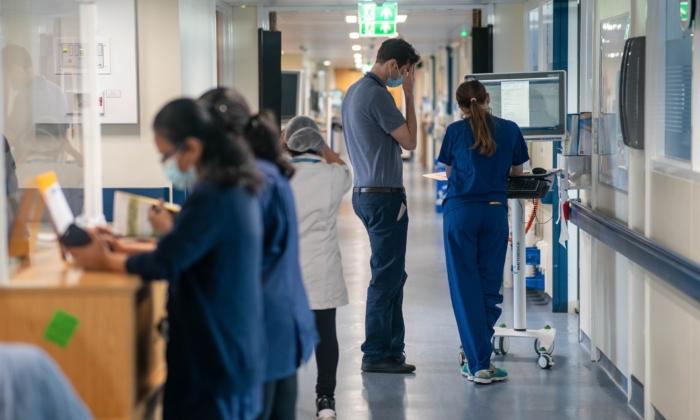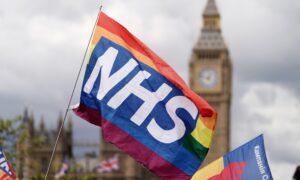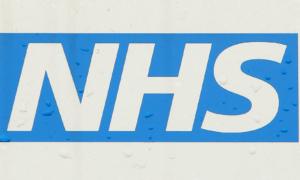Public satisfaction with the NHS has plummeted to the lowest level on record, according to Britain’s longest-running survey.
Findings of the British Social Attitudes (BSA) survey 2023 suggest less than a quarter, or 24 percent, of the British public are satisfied with the health service.
It’s four percentage points down from the rate in 2022, 29 points down since 2020, and the lowest level since the survey began in 1983.
National Centre for Social Research, which runs the research, surveyed 3,374 people across Britain for the 2023 survey, and the results are weighted to be representative of the British public, according to The King’s Fund and Nuffield Trust analysis of the survey data.
According to the report, only 13 percent of the public were satisfied with social care in 2023, compared to 14 percent in the previous year, and 57 percent were dissatisfied with social care.
In 2022, for the first time, more than half of survey respondents (51 percent) were dissatisfied with the NHS. The rate crept up to 52 percent in 2023.
The most cited reason for dissatisfaction was the length of time it took to get a GP or hospital appointment, with 71 percent of dissatisfied survey respondents choosing it.
Over half (54 percent) picked “not enough NHS staff;” 47 percent picked “the government doesn’t spend enough money on the NHS;” and 32 percent chose “Money is wasted in the NHS.”
According to BSA survey results, overall satisfaction with the NHS plummeted after the COVID-19 pandemic, from 60 percent in 2019 to 24 percent in 2023.
The pandemic and the government’s response also led to longer hospital waiting lists, with back-to-back strikes adding pressure onto the system.
As of January, 7.58 million patients in England were waiting for hospital waiting treatment, according to the latest figures from NHS England.
The number was lower than a peak of 7.77 million seen in September 2023, but still 70 percent up compared to January 2020.
According to BSA surveys, between 2022 and 2023, satisfaction with the NHS dropped in almost all population groups, with the exception of black, mixed, other ethnic minorities (excluding Asian).
Black people are the most likely to be satisfied (around 30 percent) with the NHS, followed by Conservative voters, other ethnic minorities, and people with the lowest income.
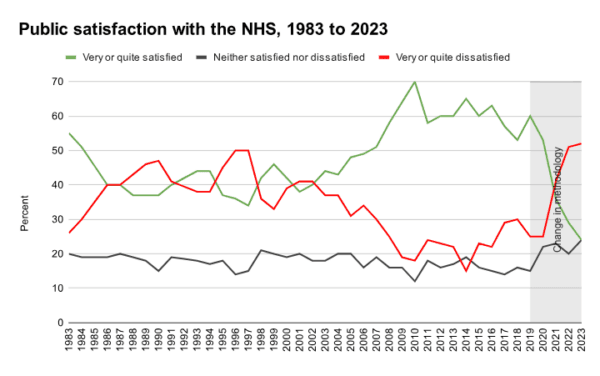
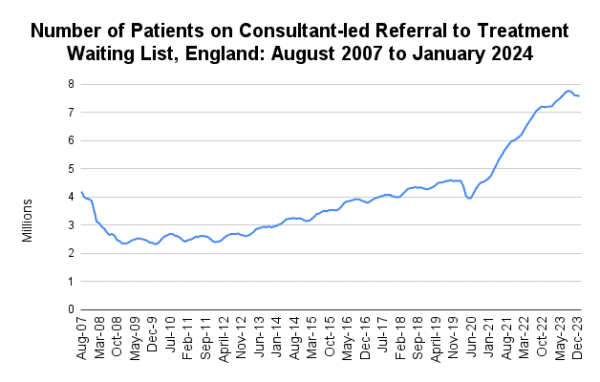
Black people are also by far the least likely to be dissatisfied (around 33 percent), followed by those with the lowest income, and those with no political allegiance (both around 45 percent).
Respondents in Wales are most likely to be dissatisfied with the NHS (over 60 percent) compared to any other group, followed by those in Scotland (slightly below 60 percent), those with a monthly income of £4,351 and above (over 55 percent), Labour voters, and over-65s (both just below 55 percent).
The top reason for being satisfied with the NHS remains that care is free at the point of use. The second and third most chosen reasons are a “good range of services and treatments available” and “the quality of NHS care.”
The public still overwhelmingly support the ideas that the NHS should “definitely” and “probably” remain free at the point of use (92 percent), be available for everyone (83 percent), and be primarily funded through taxes (83 percent).
The rates are broadly similar with the results in 2022, which were 93 percent, 84 percent, and 82 percent, respectively.
According to the report, 84 percent of the public believe the NHS has a funding problem.
Asked how the problem should be solved, 48 percent opted for more taxes and spending, compared to 43 percent in 2022; 42 percent thought the tax and spending level should remain unchanged; and 6 percent believe taxes and spending on the NHS should be cut.
